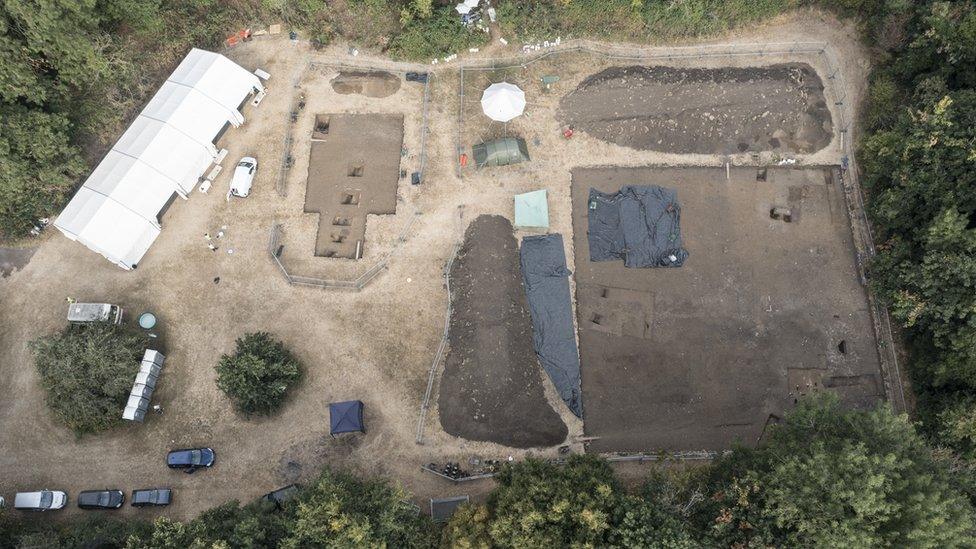Archaeologists return to 8th Century monastery
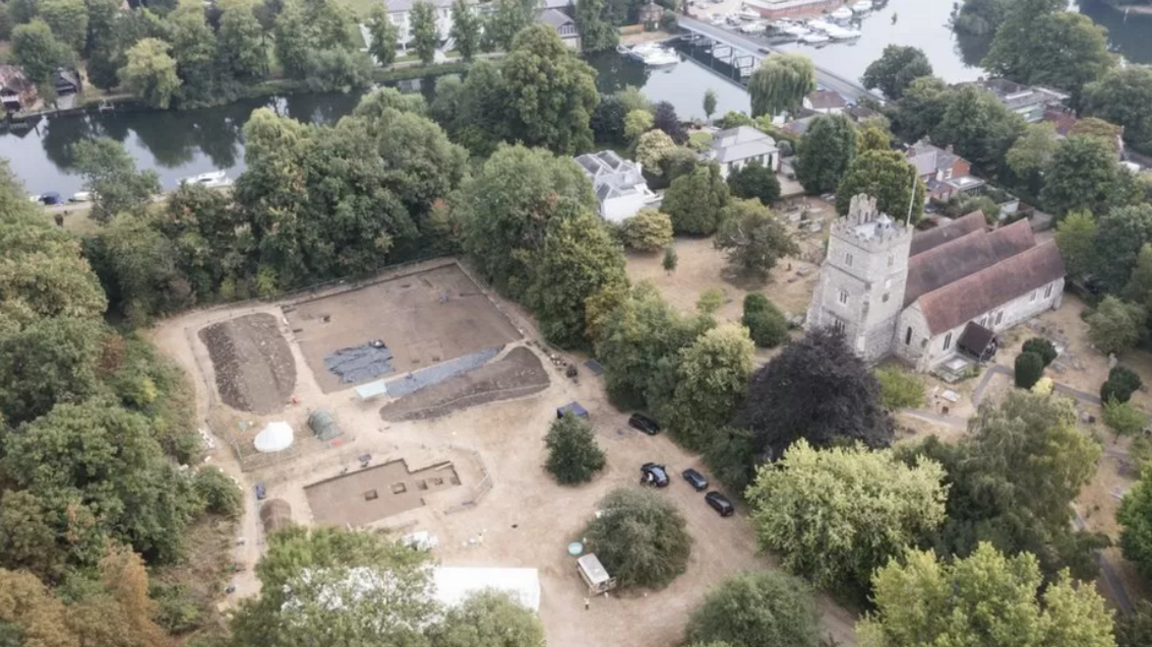
The dig continues in Paddock Field, next to Holy Trinity Church, in Cookham
- Published
Archaeologists are carrying out further excavations at an 8th Century monastery to provide more insight into life and death more than 1,200 years ago.
The team from the University of Reading first discovered the Anglo-Saxon site in Cookham, Berkshire, in 2021.
This will be the fourth dig on land belonging to Holy Trinity Church.
Professor Gabor Thomas, who is leading the excavations by the University of Reading, said they had "begun to paint a detailed picture of the layout and social conditions of the monastery".
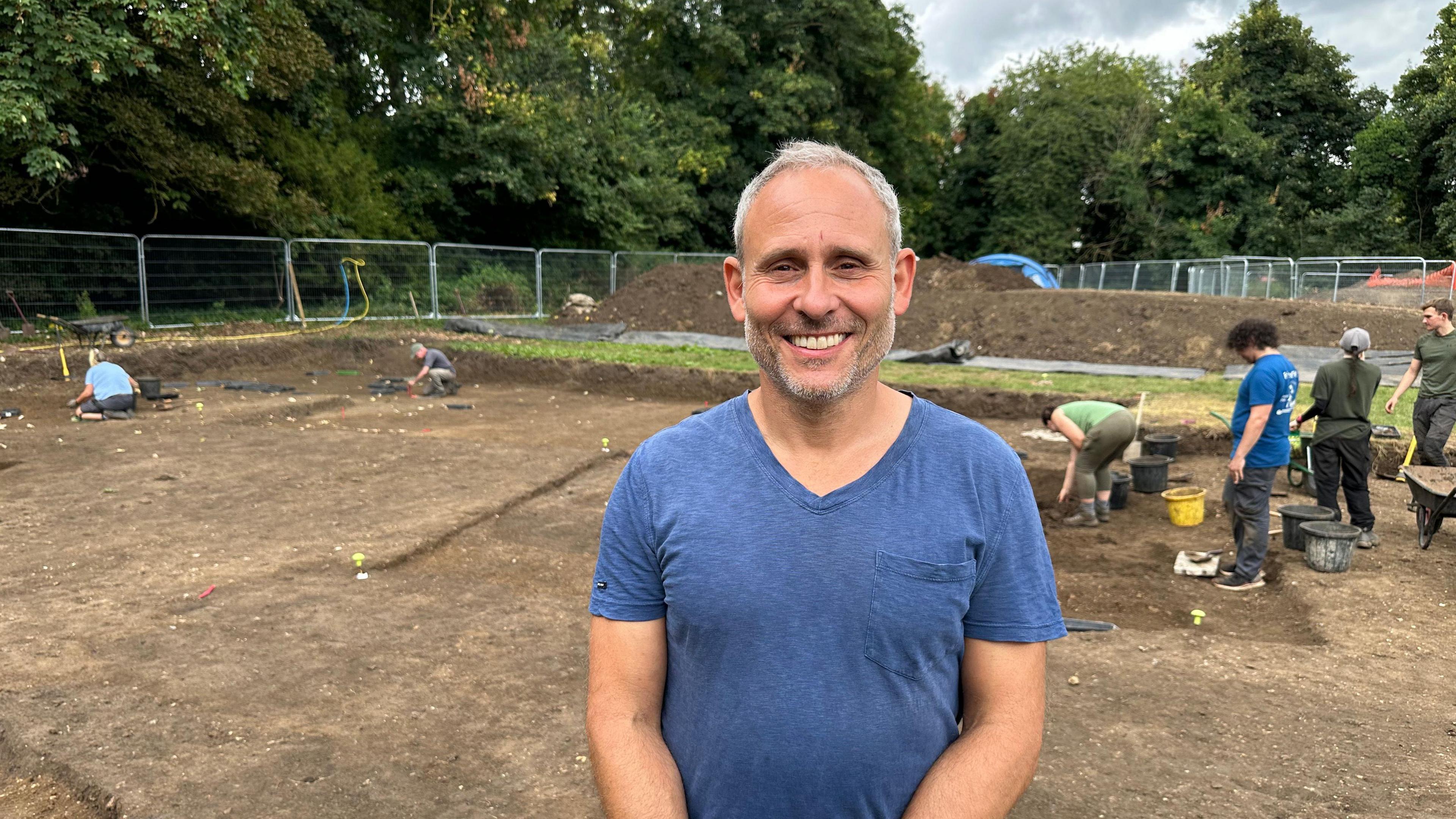
Prof Gabor Thomas says "there is still a huge amount more to discover"
He explained: “There are records of a monastery existing in Cookham - a royal monastery - but the precise location wasn't known until we came along and started doing work within this area.
"We can say unequivocally that the monastery stood on this strategic site right next to the River Thames.”
He continued: "We’ve got a rare opportunity to understand the physical layout of a monastery, at this period, on quite a large scale.
"What we're trying to understand is what different activities took part within the monastery and how did that play out on a day-to-day basis."
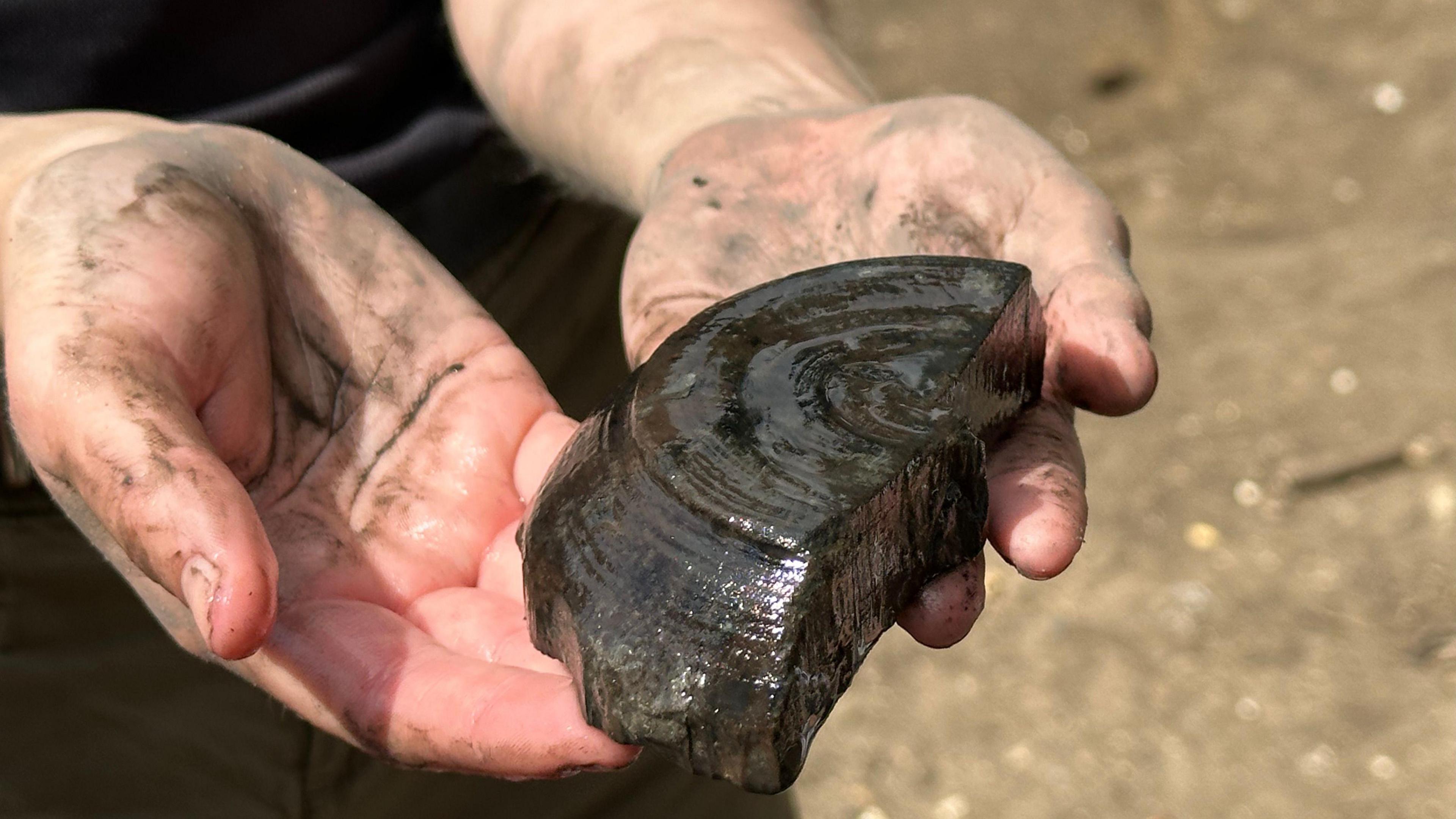
During this years dig, excavators found part of a wooden bowl
In one of the trenches, archaeologists found a wooden bowl which Prof Thomas described as “unbelievable”.
“What we're looking at here is the fragments or half fragment of a lathe, turn wooden bowl," he explained.
“The reason it is so remarkable is that wood doesn’t normally preserve on archaeological sites, which are predominantly dry, but down in the bottom of the well we have preserved waterlogging.”
He explained that utensils that normally survive on sites like this are ceramic but that’s “only a biased view of the vessels that people used in daily life” and in his opinion wooden bowls would have been more prevalent.
“We don't get them surviving in the archaeological record, so to have evidence like this is just breathtaking really,” he added.
Follow BBC South on Facebook, external, X (Twitter), external, or Instagram, external. Send your story ideas to south.newsonline@bbc.co.uk, external or via WhatsApp on 0808 100 2240, external.
- Published9 August 2023

- Published19 August 2021
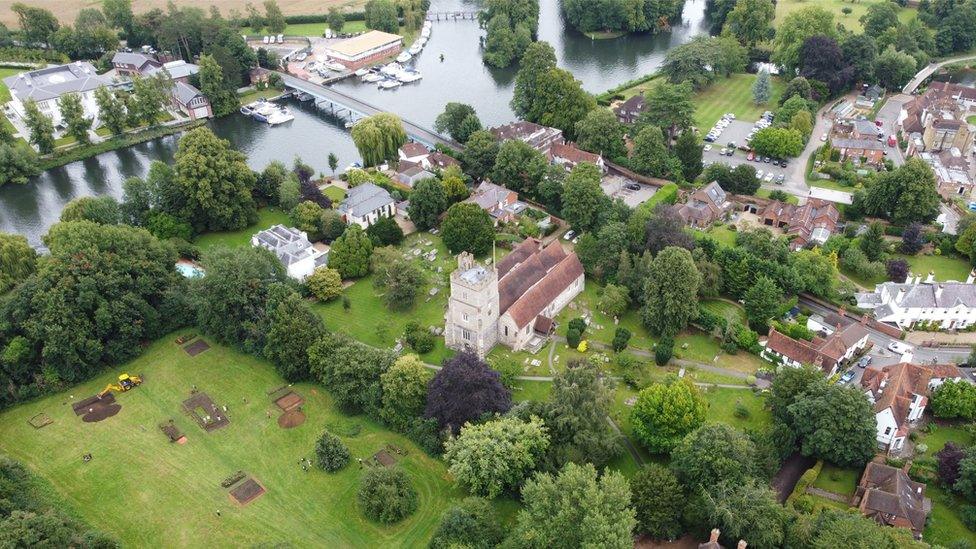
- Published26 August 2022
